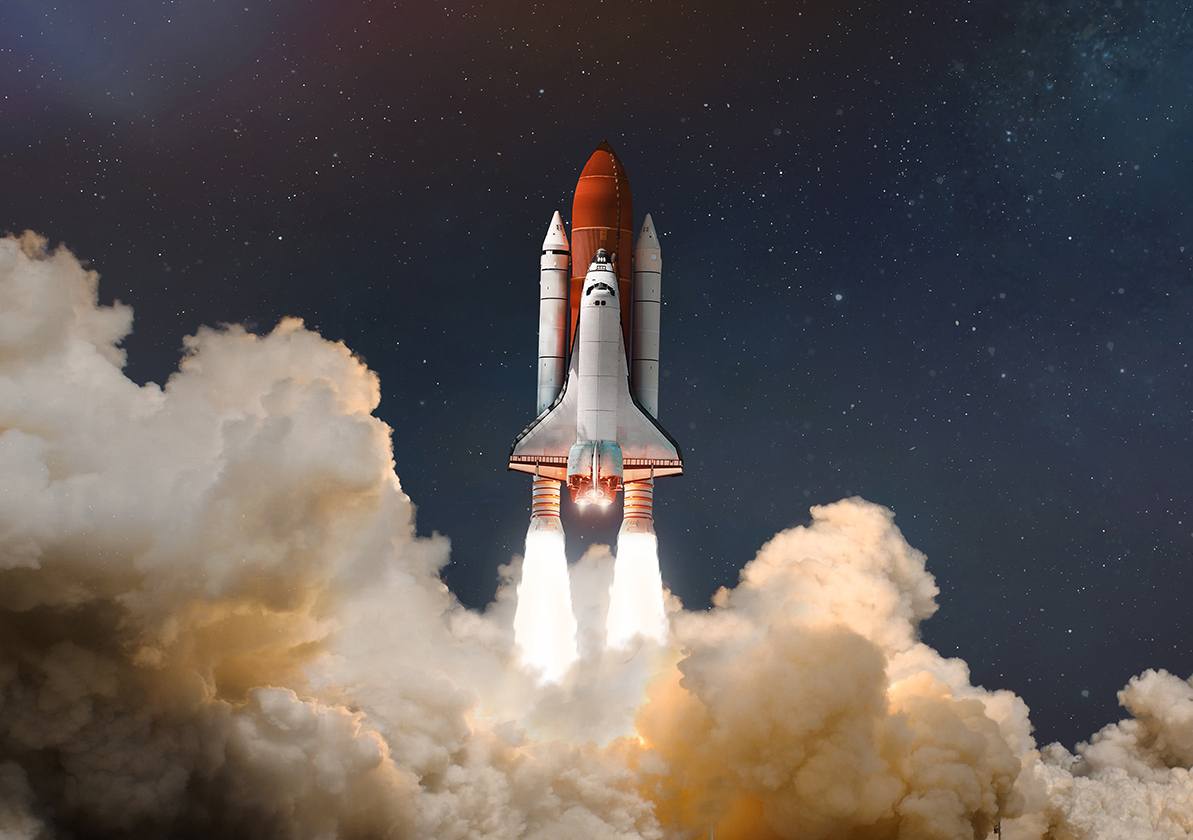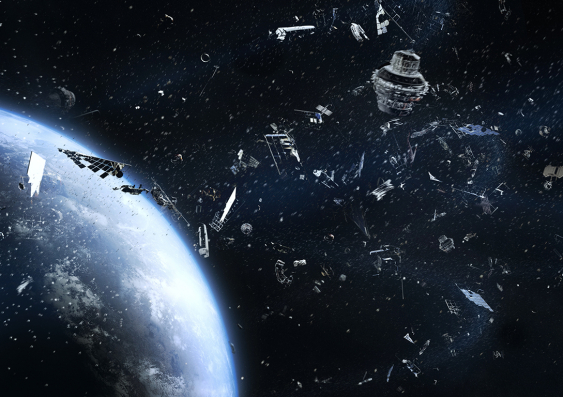World Space Week: big ideas will soon launch into action
Space mining and the need to deal with space junk are set to be major developments over the next decade, say UNSW experts.
Space mining and the need to deal with space junk are set to be major developments over the next decade, say UNSW experts.

When it comes to space, there is definitely no shortage of new technologies and exciting opportunities just waiting to be developed and explored.
This week and next is World Space Week, which is an international celebration of science and technology and contribution for the betterment of humankind.
The week especially commemorates the launch of the first human-made Earth satellite, Sputnik 1, in 1957 which opened the way for space exploration, and the signing of the Treaty on Principles Governing the Activities of States in the Exploration in 1967.
This year's theme "Space and Entrepreneurship" recognises the growing significance of the commercial partners and entrepreneurs on the space industry.
From launching space stations to soft landing on other planets, the industry has made massive leaps since.
In fact, according to the Space Foundation’s The Space Report in 2022, the space economy was valued at $469 billion in 2021, representing a colossal growth of 70 per cent over the last decade.
The space industry is predicted to continue growing and could potentially reach up to $1 trillion by 2030.
Professor Andrew Dempster, Director of the Australian Centre for Space Engineering Research, and mining engineering expert, Professor Serkan Saydam, from UNSW School of Minerals and Energy Resource Engineering share their predictions on what trends we can expect to see take off in the next decade:
On your marks, get set, go!
Forget the Olympics, the biggest competition internationally is the race to the moon’s south pole.
This is being motivated by ongoing efforts to source water on the moon, which is said to be potentially present in greater amounts near its south pole, as reported by NASA.
What started as a nuclear arms race between USA and USSR in 1955, has now transformed into an economy worth billions, and with many more competitors involved.
In August this year, India’s Chandrayaan-3 mission successfully touched down on the lunar surface – landing closer to the moon’s south pole than any other spacecraft has before. Weeks earlier, Russia’s unmanned Luna-25 spacecraft crashed into the moon after spinning out of control.
However, Prof. Dempster says the real space race is between two other prominent players: USA and China.
China has ramped up its space program over recent years – building a space station, landing a rover on Mars and becoming the first country to successfully touch down on the far side of the Moon.
“China have been talking about setting up a functioning lunar economy at the South Pole by 2050 which is a couple decades later than the Americans who have ambitions to set up permanent presence by 2030,” says Prof. Dempster.
“Interestingly, it was India who got there first and beat both China and USA at their own game. Despite this achievement, I still think the race is between China and the United States.
“As spectators of this global race, we can expect to see both nations ramp up their activity as we move closer to their target of 2030.”

Even the smallest pieces of space debris can cause significant damage to satellites and human astronauts in space. Photo: Getty Images
While the space economy is enormous, one of the biggest problems is actually very small.
Space junk, or space debris, is any piece of machinery of debris left by humans in space.
The European Space Agency estimates there’s more than 170 million pieces of space debris larger than one millimetre currently floating around space.
Even an item that small has the potential to damage or destroy sub-systems on board a spacecraft, which is a major problem.
One of the main demands for more satellites to be placed in low earth orbits is the growing trend to provide broadband internet access and remote satellite sensing.
And as more satellites are launched, the amount of debris grows and the risk of a catastrophic collision subsequently increases.
“As space agencies and private space companies launch more satellites into space, this increases the proliferation of space junk,” says Prof. Dempster.
“For example, SpaceX are launching many thousands of satellites into orbit every single year and the likelihood of them colliding with each other and creating more space junk is only increasing – and the tipping point can’t be too far away.
“Long term, not only will it be harder to launch crucial satellites into those orbits, but it’ll be harder and more dangerous to travel through those orbits as well.”
Read more: Space junk: Houston, we have a problem
As humans explore deeper into space, the motivation to establish colonies on other planets grows stronger and further highlights the importance of space resources extraction.
Market predictions for lunar mining, particularly lunar water, project a multi-billion dollar industry by 2050.
Mining expert, Professor Serkan Saydam, from UNSW School of Minerals and Energy Resource Engineering, says we can expect to see space mining happen first on the Moon followed by Mars and asteroids.
“Potential mining sites encompass the Moon, Mars and its moons, asteroids, and comets. This aligns with NASA's ARTEMIS program which aims to set up a lunar colony,” he says.
“The main focus in terms of creating a colony on Mars is finding water – and being able to extract it and process it using robots before humans land.
“However, off-Earth mining has its own challenges including geological uncertainties, infrastructural needs but most importantly the energy requirements needed to launch.
“At the moment, we’re using rocket fuel but it’s unreliable, so we need to develop a more reliable and environmentally friendly power source - that will be the real game changer.”
Read more: 8 things you never knew about mining on Mars, the Moon... and even asteroids!
While the likes of NASA and the European Space Agency (ESA) may be more recognisable household names, it doesn’t mean Australia isn’t an important player in the space game.
According to the Australian Space Agency, $3 billion has already been invested into the nation’s space sector between 2018 to 2023 with over 600 organisations contributing to advancing Australia’s space capability.
Backed by various international treaties and agreements and coupled with a strong pipeline of planned capital investments on the way, the Australian space economy is projected to grow by 7.1 per cent per annum over the next five years.
Prof. Dempster says: “The Australian space landscape is fascinating in that in general we don’t have a large presence of the big space primes like Lockheed Martin, Boeing or Airbus, but instead our industry is made up mostly of many start-ups.
“I’d hope that’s the way it keeps going because the start-up network is a breeding ground for new and innovative ideas.
“Factoring in our already world-leading research capability in areas including artificial intelligence, telecommunications, and mining – it just creates a more dynamic space environment.”